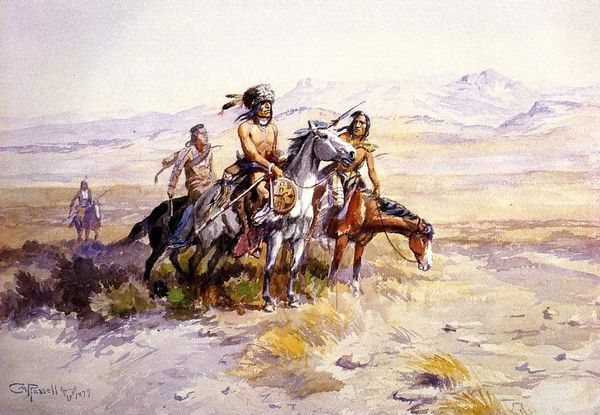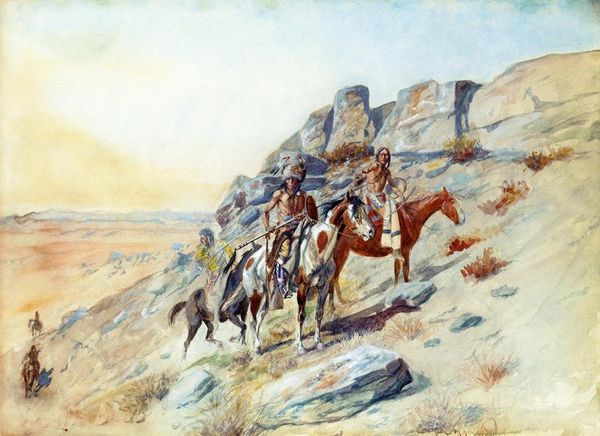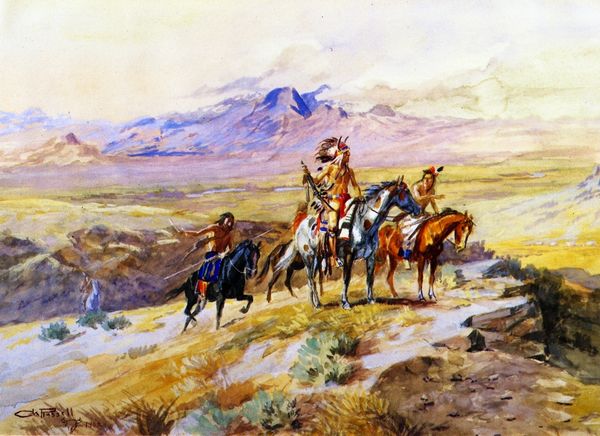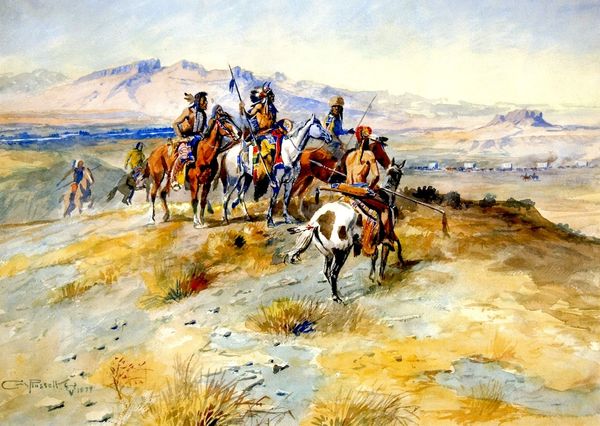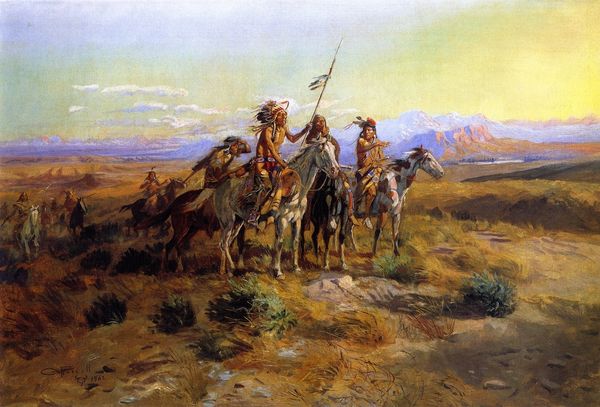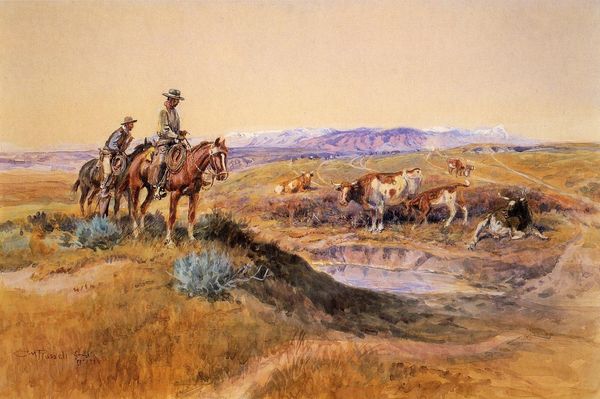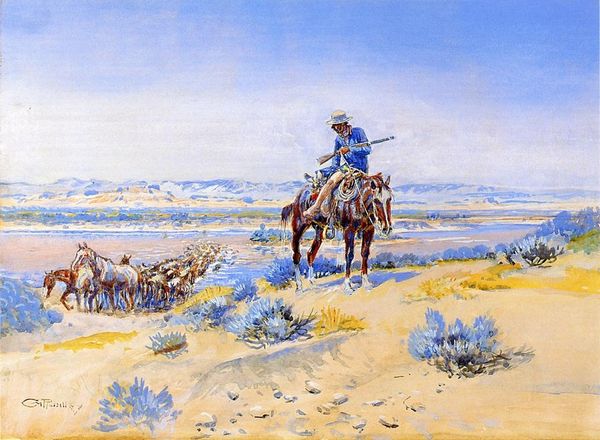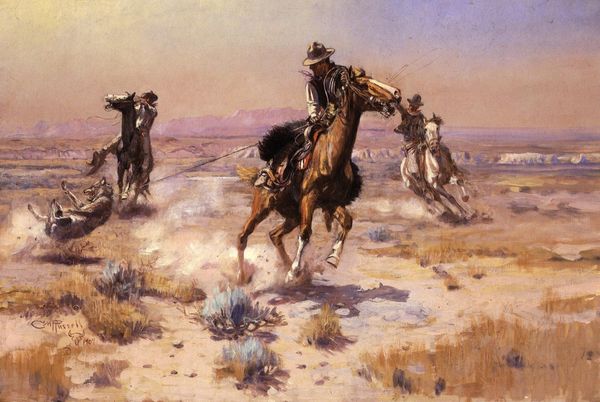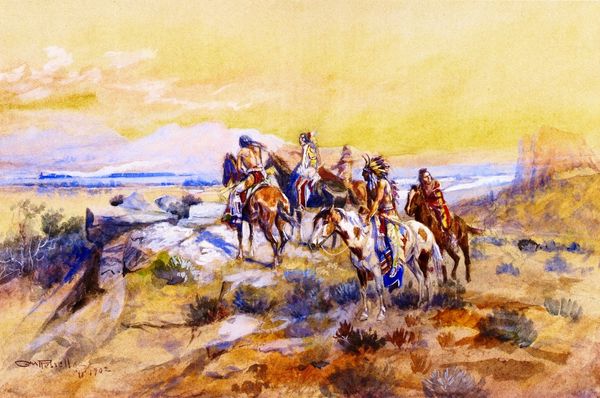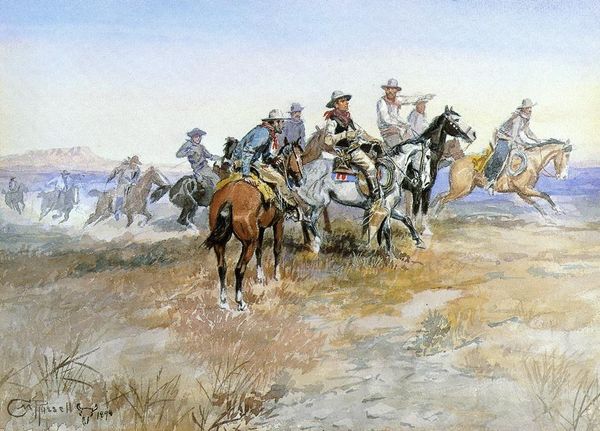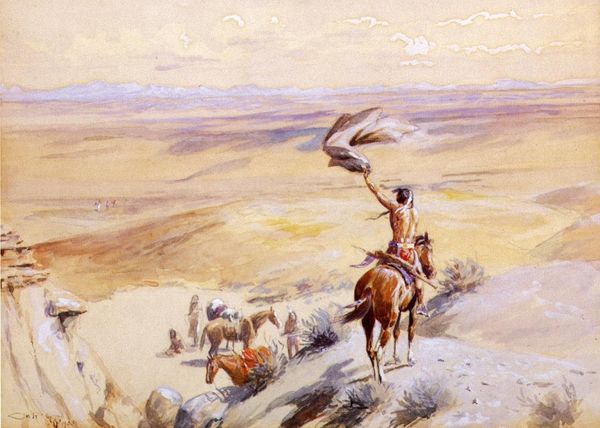
painting, watercolor
#
painting
#
landscape
#
figuration
#
oil painting
#
watercolor
#
horse
#
natural environment
Copyright: Public domain
Editor: Here we have Charles M. Russell's watercolor, "On the Prowl," created in 1898. It shows two figures on horseback against a vast landscape. I’m struck by the detail in their clothing, particularly given it's watercolor. What’s your perspective on this work? Curator: From a materialist perspective, let's consider the labor and materials involved. Russell, although portraying a romanticized view, still used commercially produced paints, paper, and brushes – commodities connected to industrial capitalism. Note the depiction of the Indigenous figures contrasted with their probable assimilation of western arms. The rifle that is strapped to the front figure's horse likely represents a shift in material culture brought on by European colonialism. What do you make of this cultural juxtaposition of native style with trade arms? Editor: That's fascinating, the implication that the very tools used to depict this traditional scene are linked to its transformation! How does the use of watercolor as a medium affect its reception or meaning? Curator: Watercolor, often viewed as 'lesser' than oil paint, served Russell well. It was portable and faster, fitting for someone documenting a changing West. Was he elevated from 'craft' to 'high art' due to this choice? Were images like this being created with commercial consumption in mind for mass distribution to westerners or to reflect Indigenous life? Did it reinforce or resist stereotypical images of Indigenous Americans for the marketplace? Editor: I see. He's working within a commercial structure even as he’s seemingly documenting something outside of it. Considering the painting's history and reception alongside its actual materials helps to understand the relationship. I appreciate this fresh perspective! Curator: Exactly! Considering the materiality of "On the Prowl" broadens its narrative. It unveils deeper questions of commodification and the intersection of art, labor, and cultural identity during a pivotal period in American history.
Comments
No comments
Be the first to comment and join the conversation on the ultimate creative platform.
